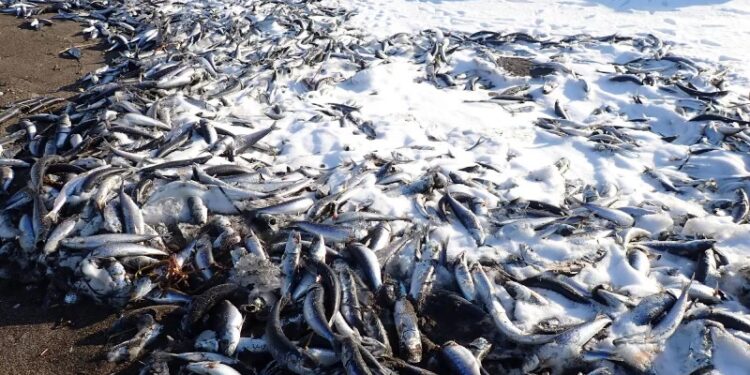In an eerie occurrence on Thursday morning, thousands of tons of dead fish, primarily sardines and some mackerel, washed ashore in Hokkaido, northern Japan, creating a surreal silver blanket covering almost a mile of coastline. The unsettling phenomenon has raised concerns among officials and locals alike, adding to a series of unexplained mass fish deaths reported along various parts of Japan’s coastline.
This incident comes merely three months after Japanese authorities commenced the release of treated radioactive water back into the sea, sparking speculation about the potential ecological impact on local marine life. While it remains unclear if there is a direct correlation between the radioactive water release and the mass fish deaths, it has intensified the ongoing debate about the environmental consequences of such measures.
The silver sheen of the lifeless fish has prompted officials to investigate the cause of the phenomenon, with scientists grappling to provide a comprehensive explanation. Similar instances of mass fish deaths have been recorded in various regions of Japan, creating an urgent need for a thorough examination of the environmental factors contributing to these unsettling events.
As communities along the Japanese coastline await answers, the mysterious fish deaths serve as a poignant reminder of the delicate balance within marine ecosystems and the potential repercussions of human activities on the environment. The situation calls for a closer examination of the ecological impact of industrial practices to ensure the long-term health and sustainability of the world’s oceans.










